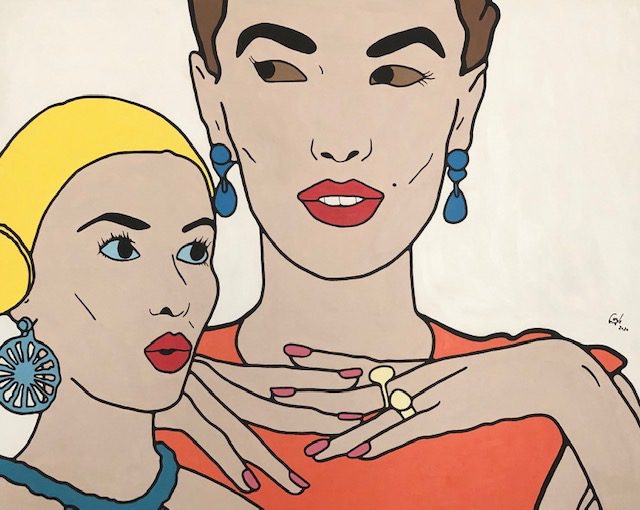To what extent do materials dictate the end price of the artwork? Art historian and Medici scion Lorenzo de’ Medici raises an interesting point about locality and material:
“[During the Renaissance] they had to use the materials they knew, which were available around them. Today, with globalisation, with the Internet, we are going all over the world in the same time; we are going much faster. And you can discover new materials easily […] it’s easier for the artist of today to find something to have a genius idea, because of this enormous availability that you have around yourself.”
Even during the pre-modern period art materials told a fascinating story of material, location and commerce. Pigments, metals, specific types of stone were transported long distances even 5,000 years ago. By the medieval period, art materials travelled thousands of miles. Monks on Lindisfarne didn’t have lapis lazuli pigments or gold in Northumbria. Centres of art were centres of art markets, trade and patronage. The scarcity of materials available to the artist would have thus given an ineluctable sheen to work prepared using rare materials even prior to their execution. One imagines only a select few with the right patronage would have been able to produce their version of Damien Hirst’s skull.
“The most expensive contemporary artwork, in terms of the value of its raw materials, is For the Love of God, created from £12 million ($23.7 million) worth of materials in 2007 by Damien Hirst (UK), in collaboration with the British jewellery company Bentley & Skinner. The human skull (that of a European male living between 1720 and 1810) was cast in 2,156 g (76 oz) of platinum, and set with 8,601 ethically sourced flawless diamonds (weighing a total of 1,106.18 carats), including a 52.4-carat, pear-shaped pink diamond surrounded by 14 white brilliant-cut pear-shaped diamonds (weighing 37.81 carats), placed on the forehead. The skull’s original teeth were also set in the jaws of the skull. The work of art was revealed at The White Cube gallery, London, UK, on 1 June 2007.” (Guinness World Records. 2021)
Exclusive stuff, and a clear way to signify the concept of value itself, notwithstanding the rather opaque sentiment behind the creation, which was sold (perhaps pre-sold) to an investment group and the artist himself.
At the other end of the spectrum we have Stuart Semple, who some say is continuing his practice of positioning himself within the centre of artistic production through his shop/installation/activist space Culture Hustle. On one hand Semple is simply selling art supplies and on the other he is making statements about the access to and use of certain materials within the art world. Anish Kapoor copyrighted ‘the blackest black’ material for his own exclusive use, an act which inspired Semple to create ‘an even blacker black’ for the exclusive use of everyone except Kapoor.
Then as now, access to materials is a hard limit to the potential production of certain types of art products. Of course, creativity has no limits, but not all creative products are equally valued in the common currency of the art market. Whether an artwork is truly successful will never be quantifiable and only a monster would wish that were possible. However, the level to which an artwork is worth more than its materials at the point of its first sale is probably the clearest approximation of an artist’s worth. But even this seemingly simple equation is confounded by artists when we consider the different factors to the creation of that immanent space of cash value between material and worth. Consider such expenses as marketing, gallery commissions, documentation, assistants, etc.; all the pageantry that creates a show. Potentially and perhaps accumulatively huge, no?
We are also excluding the artist’s labour. Is labour a material? Of course it is! However the hoary contractor’s adage (variously attributed to Picasso, Whistler and most plumbers) that you’re not paying for 15 minutes of spanner-turning, but 15 years of problem-solving only goes so far with the notoriously unfair art market.
Youth and verve rarely seem to struggle and are loudly rewarded, not least by being labelled a discovery, whereby they seem to need to do even less for more. The material the market values most is novelty, something always in short supply and which withers quickly at the second touch. Bottle that and you’d really have something worth travelling for.
ref:Guinness World Records. 2021. Most Expensive Materials Used In A Piece Of Contemporary Art. [online] Available at: <https://www.guinnessworldrecords.com/world-records/most-expensive-materials-used-in-a-piece-of-contemporary-art> [Accessed 15 January 2021].
Main image: Binary by Emma Coyle 2020

The aim of art is to represent not the outward appearance of things, but their inward significance. – Aristotle




















